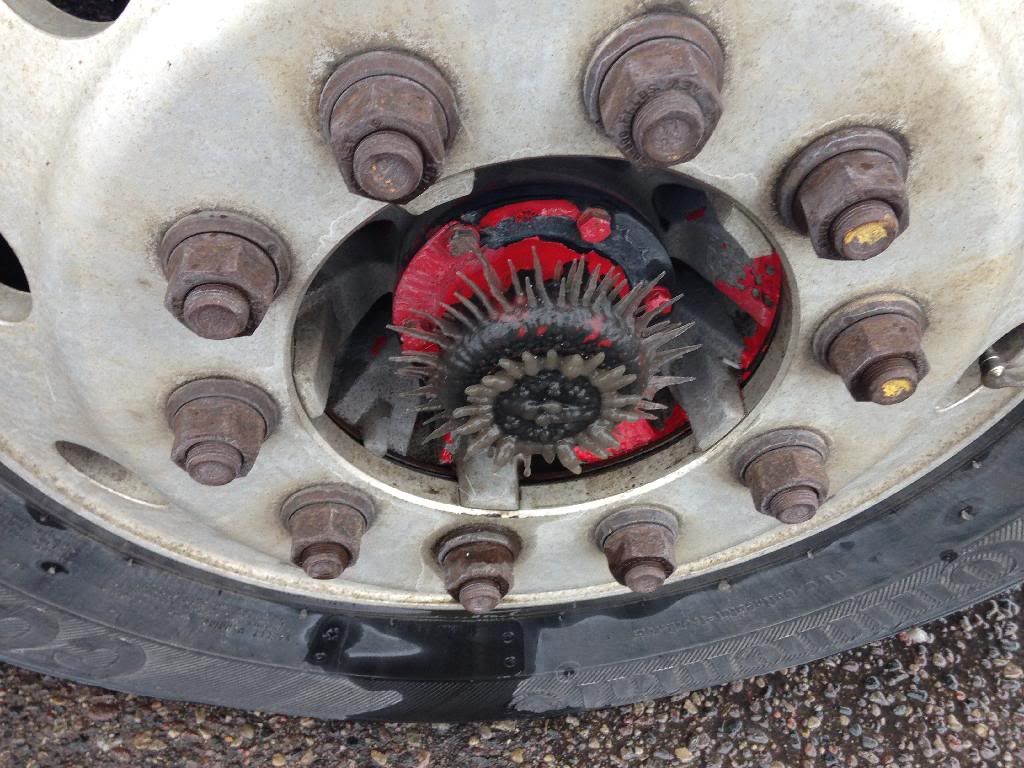Another HOS Question...
Topic 2841 | Page 1

Now, I know there are other factors that affect your time. Things like fueling and having to stop to go to the bathroom unplanned and loads taking longer to load, etc. I am trying to figure this out so when I get handed that 1200 or 1500 mile run, I can be as efficient as possible. So, using the above example:
If I could drive 15 hours the first 24 then take a ten hour break and then drive 15 more hours in the next 24, I think that would be the most efficient way to get it done. If I were doing an average of 50 MPH on 1500 miles, I could finish it in 58 hours. Or, drive 11.5 with a ten hour break. That would be 11.5 + 10 + 11.5 + 10 + 7 would equal 50 hours. So, the split sleeper does not help when you are doing long runs.
I see where it the split rule could help when you have to stop and load and then stop and load again, etc. Am I missing something?
The whole point of a split sleeper is not to gain more drive time but in fact to extend your 14 so you are able to get your load delivered. For instance I once had a load that took me damn near all day to unload. I had only driver for about and jour before I delivered. I sat getting unloaded for 7:45. So when the 8 rolled around I was able to pick up my next load and put some miles on it. OR the time ai drove 10 hrs but they wouldnt except my load early and if I did a 10 I would miss my appt but if I did an 8 I still had an hr to drive 20 min to my drop and got a 2 while I unloaded and got 10 more hours back. It just allows you to do more.

No matter how you try, you are only allowed 11 hours of driving in a 24 hour period.
I personally have found for me that if I have a long haul (1200 - 1500+ miles) it works out better if I just drive out my 11 (or close to that), take my 10 hour break & do it again I get more done with the hours allowed. And the added benefit is that now you are not dancing around rules & possibly doing something that will get you in lots of trouble with the DOT.
That is just my take on what you are trying to do.
I find that the 8/2 split works well if I have been held up at a shipper/receiver and I did not have to drive very long just before I got there. Otherwise it just makes your schedule so messed up that it takes days to get back onto a normal routine.
Ernie
Shipper:
The customer who is shipping the freight. This is where the driver will pick up a load and then deliver it to the receiver or consignee.
DOT:
Department Of Transportation
A department of the federal executive branch responsible for the national highways and for railroad and airline safety. It also manages Amtrak, the national railroad system, and the Coast Guard.
State and Federal DOT Officers are responsible for commercial vehicle enforcement. "The truck police" you could call them.
Wine Taster, you are not going to gain driving hours. The other responses are dead on. I guess I just wanted to jump in here because I just have had the craziest schedule this past week. I've actually used the split sleeper rule five times just to make things work out right. That is unheard of for me. Usually I will only use it occasionally, but the whole purpose of it is to extend the amount of time that you have to get your 11 hours into. I'm glad to see that you are studying this stuff, and it will benefit you greatly once you are on the road, but keep in mind that once you get started in your own truck the qualcomm will help you keep up with this stuff. It makes it a little easier to see how it works when you can look at your clocks on that screen. But having the concept down in your understanding is vital to putting it to good use when you are out there giving it all you've got.
Qualcomm:
Omnitracs (a.k.a. Qualcomm) is a satellite-based messaging system with built-in GPS capabilities built by Qualcomm. It has a small computer screen and keyboard and is tied into the truck’s computer. It allows trucking companies to track where the driver is at, monitor the truck, and send and receive messages with the driver – similar to email.
Well, I think I have a pretty good understanding of it all. I am leaving for school next week. I found a cool app for my android phone. I have a 22 hour drive to school. I have plenty of time to get there and have to make a couple of stops along the way to take care of some things. I think I am going to run the log app and do it as if I were driving a truck. Just a way to get a little experience with it all hands on. Thanks for all the help!

I found this by Schneider National:
HOS:
Hours Of Service
HOS refers to the logbook hours of service regulations.
Wait. Is this for real?! I wasn't taught this in school and no one has ever mentioned it to me. I thought once you hit your 14 hours after you started, that was it. You couldn't drive again for 10 more hours. Are you guys saying that there is a way around the 14 hour rule?

Yes and no. The 14 hour rule still applies. It is just a matter as to where you can calculate it from.
Wait. Is this for real?! I wasn't taught this in school and no one has ever mentioned it to me. I thought once you hit your 14 hours after you started, that was it. You couldn't drive again for 10 more hours. Are you guys saying that there is a way around the 14 hour rule?
Mistelle, the next time you drive do this:
Drive your shift.
At the end of your shift write down the hours you have remaining.
After 8 hours of consecutive Sleeper Berth , you'll see that you gained the hours back that you had when you ended your shift. That's 1/2 of the Split Sleeper Berth. So yes, its true but you really don't ever need to use it as a team driver.
Sleeper Berth:
The portion of the tractor behind the seats which acts as the "living space" for the driver. It generally contains a bed (or bunk beds), cabinets, lights, temperature control knobs, and 12 volt plugs for power.
New Reply:
New! Check out our help videos for a better understanding of our forum features

















Preview:
This topic has the following tags:
Life On The Road Understanding The Laws







 TT On Facebook
TT On Facebook
Ok, I think I have the split sleeper berth thing figured out. What I am trying to figure out now, do you gain some driving hours using when you are doing nothing but driving? This is what I mean:
You drive 5 hours and then take a 2 hour sleep berth. Then you drive 6 hours and take a 8 hour sleeper berth. So, now you can drive 5 more hours. Take a 2 hour sleeper berth and then drive for 6 more. Sleeper berth 8 hours, now drive 5 more hours. Now, 2 hours sleeper berth. I get it. Do you gain more driving hours this way compared to driving 11.5 (the 0.5 is for the mandatory break) and taking a ten hour break? As best as I can tell, you can get some hours hours more driving in a 24 hour period.
Based on 48 hours in the above example: The first 24 hours, you are allowed to drive 15 hours. (5 +6+4). The second 24 you are allowed to drive 12 hours. So, what you gain per day does vary but you do gain drive time. Am I doing this correct?
Sleeper Berth:
The portion of the tractor behind the seats which acts as the "living space" for the driver. It generally contains a bed (or bunk beds), cabinets, lights, temperature control knobs, and 12 volt plugs for power.